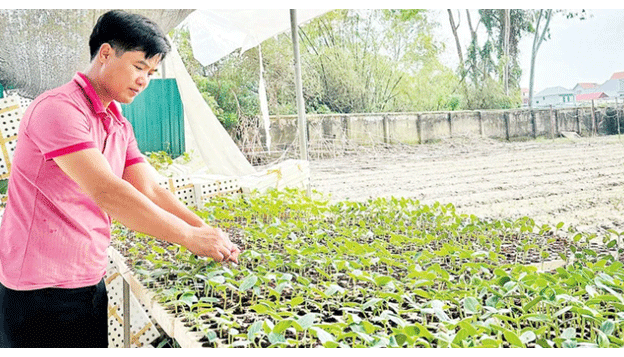Typhoon No. 3 and its aftermath have left a significant mark on agricultural production in northern Vietnam. As of September 17, nearly 51,000 hectares of vegetables were destroyed, with areas such as Hanoi losing nearly 11,000 hectares. Other regions, including Nam Định (3,800 ha), Thái Bình (3,345 ha), and Hưng Yên (2,727 ha), have also been severely impacted. In Yên Phú Commune (Yên Mỹ District, Hưng Yên), about 258 hectares of vegetables were submerged, causing massive crop failures as the fields were submerged for nearly 10 days, leading to total losses in many areas.
Difficulties in Replanting Amidst Seed Shortages
Farmers have begun recovering from these losses, but the task is daunting due to widespread seed shortages and inflated prices. For instance, short-season leafy vegetables such as rau muống and mồng tơi are being prioritized to restore market supply, yet seeds for these vegetables are scarce. Prior to the typhoon, many farmers had sown seeds for winter crops like cabbage, tomatoes, and kohlrabi, only to see their efforts washed away. This has driven the price of vegetable seeds, such as cabbage, cauliflower, and tomatoes, from 300-400 thousand VND to 1.2 million VND per thousand plants—an unprecedented increase. Even at these prices, farmers struggle to find enough supply to meet demand, which has delayed the winter planting season by 1 to 1.5 months.
For crops like spinach, bok choy, and other leafy greens, seed prices have surged by 10-15%, with some varieties completely unavailable. Farmers are now forced to purchase whatever seeds they can find, disregarding earlier criteria like disease resistance and yield quality due to the urgent need to begin replanting.
Government Interventions and Future Outlook
In response to this crisis, the Ministry of Agriculture and Rural Development (MARD) has reported that 112.5 tons of vegetable seeds and 1,080 tons of maize seeds are required to meet recovery needs. However, current national reserves only hold 0.25 tons of vegetable seeds and 275.4 tons of maize seeds, far short of the need. MARD has appealed to seed companies, associations, and research institutions to urgently produce and supply seeds to affected areas, while urging businesses not to raise prices further.
Moreover, MARD has advised farmers to focus on preparing the soil for replanting as soon as the water recedes. Immediate steps include soil aeration, applying fertilizers like phosphorus and NPK, and ensuring proper drainage systems in the fields to prevent future waterlogging.
The devastation from Typhoon No. 3 has not only affected crop yields but also exposed vulnerabilities in seed supply chains. As farmers struggle with delayed planting seasons and soaring seed costs, the government and seed producers must work together to stabilize the seed market. Ensuring an adequate and affordable seed supply is crucial for the recovery of the agricultural sector in northern Vietnam, particularly as farmers face a delayed winter planting season.












